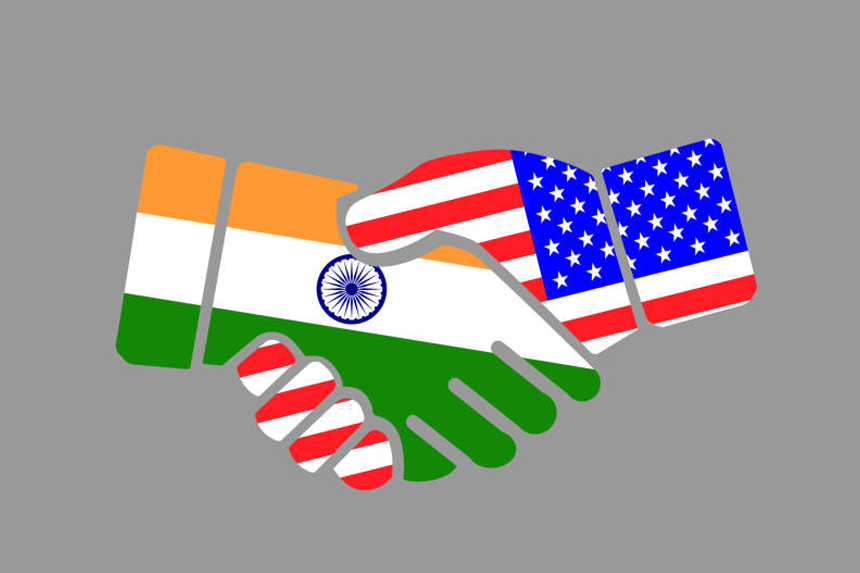With US Vice-President JD Vance making a major diplomatic trip to India, trade negotiations between the US and India have hit a crucial stage. Both countries are eager to find a solution that serves their geopolitical and economic interests in the face of rising tensions over international trade. This visit offers a significant chance to address long-standing trade concerns and provide the framework for a bilateral deal that has the potential to transform the economy.
Given the pressure on world markets, the trade negotiations between the US and India may signify a strategic shift. The goals of these talks are to settle tariff-related conflicts, promote closer economic relations, and boost collaboration across a range of industries, including energy, technology, and defense. It is anticipated that the conclusion of these discussions would have significant ramifications because both nations are facing increasing difficulties in the global market.
Why Are Trade Talks Between the US and India Important?
The US-India trade negotiations take place during a difficult period in the two nations’ relationship. The United States’ application of tariffs has been one of the main sources of contention. A 27% duty on Indian goods was previously declared by President Donald Trump’s administration, which sparked a backlash. Increased diplomatic interactions have resulted from the US administration’s constant accusations that India violates tariffs.
Trump did, however, temporarily halt the tariff hike in April 2025 to allow for negotiations. To prevent a further escalation in trade tensions, both nations must agree by the pause’s expiration date of July 9, 2025.
India is a key player in the framework of international trade because of its strategically located Indo-Pacific area and quickly expanding economy. In addition to settling tariff disputes, the US-India trade negotiations aim to pave the way for further economic cooperation. Given that India now has a $45 billion trade surplus with the US, both countries are working to close the trade gap. As the US looks to close the gap and boost exports to India, this surplus is a major topic of conversation.
With an average tariff rate of about 12% compared to the US’s 2%, India’s tariffs are significantly higher than the US’s. These differences have caused conflict, especially in industries like technology, medicine, and agriculture. Thus, there may be major advantages for both nations if these problems are resolved through the US-India trade negotiations.
What Topics Will Be Covered in the Trade Talks Between the US and India?
Discussing the future of tariffs will be one of the most crucial topics in the US-India trade negotiations. India has already made great strides in reducing tariffs on a number of American imports, despite the United States’ longstanding criticism of the country for its high tariffs on these goods. To guarantee that both nations can gain from more balanced trade, these talks will center on more tariff reductions and investigating potential new areas of collaboration.
The US-India trade negotiations will also focus heavily on energy cooperation. As India’s economy continues to expand, the country’s need for energy, especially gas and oil, has been rising quickly. India may be able to get natural gas and oil from the United States, which is now one of the biggest producers in the world. The two nations have advanced their energy cooperation in recent years, with India importing more American gas and oil. More energy cooperation might result from a formal trade deal, guaranteeing both countries’ long-term energy security.
There is also the possibility of cooperation in areas like infrastructure, technology, and defense. In these areas, both countries have indicated a desire to strengthen their strategic collaboration, which may open up new opportunities for economic expansion. The US-India trade negotiations offer a perfect chance to deepen relationships across a range of industries, as India seeks to diversify its supply chains and lessen its reliance on China.
Provisions for greater collaboration in the technology sector may also be included in the bilateral trade agreement. While India has become a global center for technology services, the United States has traditionally been at the forefront of technological innovation. Both nations can strengthen their economies and generate employment in fields like artificial intelligence, digital infrastructure, and software development by increasing commerce in this sector.
What Effect Will Vance's Visit Have on US-India Trade Negotiations?
It is believed that Vice-President JD Vance’s visit is an attempt to improve the strategic and commercial relations between the United States and India. His conversations with Indian Prime Minister Narendra Modi would focus on the trade negotiations between the US and India. This visit gives both parties the chance to confront urgent problems head-on, have in-person discussions, and look into new areas of shared interest, especially in trade and economic cooperation.
The fact that Vance’s family is traveling with him highlights the importance of this diplomatic interaction. Along with the official discussions, Vance will participate in diplomatic and cultural engagements, including trips to important Indian sites. The political leaders of the two countries may develop closer ties as a result of this personal touch, which would lay the diplomatic groundwork for a more solid economic collaboration.
The foreign ministry of India has voiced hope for the possible results of these talks. An Indian official stated, “We are extremely confident that the visit will further strengthen our bilateral ties.” This diplomatic engagement may serve as a spark for the two nations to reach new trade milestones as the world economy continues to change. The US-India trade negotiations are anticipated to contribute to a redefinition of the strategic relationship between these two nations, given India’s increasing significance in world geopolitics.
What Are the US-India Trade Talks' Strategic Objectives?
Resolving tariffs and minimizing trade imbalances are only two aspects of the US-India trade negotiations. They are a component of a larger plan to strengthen economic ties between the two nations and establish their dominance in the world economy. In the face of a constantly shifting global market, both the US and India have realized the increasing necessity for closer cooperation.
The increasing rivalry with China is another factor influencing the US-India trade negotiations. India and the United States have a rare chance to establish themselves as trading partners in the world economy, as both countries look to lessen their reliance on Chinese supply chains. A successful trade deal might reinforce the value of US-India economic cooperation by acting as a template for other Indo-Pacific nations.
Furthermore, a larger initiative to fortify the Quad partnership, which consists of the US, India, Australia, and Japan, involves the US-India trade negotiations. Strengthening economic connections between the US and India will be essential to the success of this strategic framework as the Quad nations look to offset China’s expanding influence in the Indo-Pacific area.
The US-India trade negotiations will play a pivotal role in determining the future of the two nations’ economic and geopolitical ties as President Trump gets ready for his possible trip to India later this year for the Quad summit.
In conclusion
For both nations, the US-India trade negotiations mark a turning point. These discussions have the potential to change the structure of international trade by emphasizing the resolution of tariff disputes, boosting trade in important industries, and developing strategic collaboration. In addition to being advantageous to both countries, a successful trade deal between the US and India would send a clear statement about the direction of commerce in the Indo-Pacific area.
The US-India trade negotiations are poised to strengthen the two countries’ ties and promote a profitable economic alliance with strong diplomatic leadership from both sides. The United States and India are in a strong position to take the lead in determining the direction of international commerce and collaboration because they are the two biggest democracies in the world.








